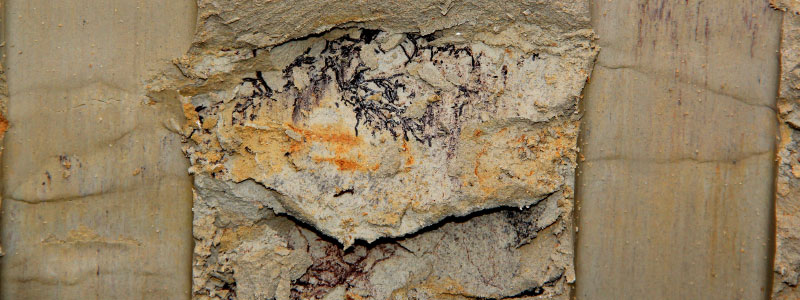Geological time
These are materials of marine origin, deposited in the Rhône corridor by the Miocene sea between - 20 and - 8 million years ago, at a time when the Mediterranean had invaded the depression located at the front of the Alpine arc, it that is to say the future Rhône valley.
Geographic location
We find the presence of safres in the heart of the appellation area and on the edges of the Garrigues terrace. The village is built on resistant safres, allowing it to develop in a stronghold situation (castle and ramparts).
Weather
Wind and sun caress them, as they do on the Garrigues terrace; however, certain slopes, for example: Roques, Coste de Coa and Mourre de la Bertrane, can provide microclimates sheltered from the wind.
Soils
This substratum (safres) is made of two categories of materials: more or less cemented sandstones, of Miocene age (end of the Tertiary) alternating with marly benches.
Safers are common materials in the Rhône Valley. These are relatively soft sandstones, which are easily attacked by erosion, resulting in sandy products.
Sometimes, more resistant benches constitute reliefs in the landscape. The agglomeration of Vacqueyras is built on a mound of coarse saffron whose inhabitants have extracted rubble to build their homes. We will also note, as characteristics of these safres, the hills of Bertrane, Les Cazaux, Les Grandes Roques and Les Petites Roques.
The investigations carried out in the Vacqueyras territory made it possible to determine their characteristics in terms of viticolity.
On the Cazaux hill, the Miocene safes are very fine sands associated with a fairly abundant clay fraction.
The same goes to Thézanne. The marls become abundant at La Monardière (marly layer located above the coarse sandstone bank of the village. Towards Fontimple, we meet them thanks to plowing. Further south, west of the Pont Neuf district, the bar of the hill of safres where the botanical paths are established distributes fine sands throughout the Seyrel valley.
Grape varieties
When the safres are in the sandstone state (rock in place, not altered by erosion), no viticolity can be envisaged. It is the sandy products resulting from their erosion which deliver the soil material in all remarkable points.
In such situations, the root system of the vine has no difficulty exploring the substratum. The wines are characterized, as regards the reds, in particular Grenache and Mourvèdre, by fluid tannins, whose small grains, with the touch of mouth, are associated with the tactile impressions that felt when the hand lets s '' run the saffron sands between your fingers.
The white grape varieties give chiselled wines, coated with fine aromatic lace. The mouth feels a minerality without insistence, light but capable of carrying a surprising length.

